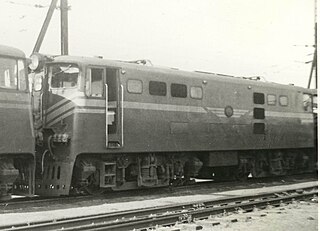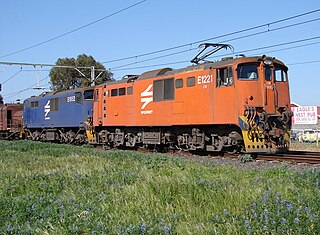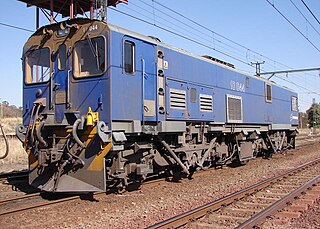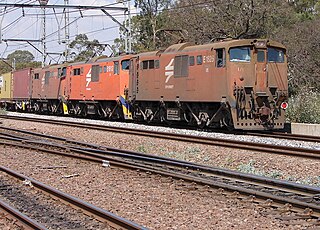
MetroBlitz was an experimental high speed commuter train service between Pretoria station and Johannesburg Park Station via Germiston, operated by the South African Transport Services (SATS). It started service on 16 January 1984.

The South African Railways Class 1E of 1925 was an electric locomotive.

The South African Railways Class 5E1, Series 1 of 1959 was an electric locomotive.

The South African Railways Class 5E1, Series 3 of 1964 was an electric locomotive.

The South African Railways Class 6E of 1970 was an electric locomotive.

The South African Railways Class 6E1, Series 4 of 1973 was an electric locomotive.

The South African Railways Class 7E of 1978 is an electric locomotive.

The South African Railways Class 7E1 of 1980 is an electric locomotive.

The South African Railways Class 7E2, Series 1 of 1982 is an electric locomotive.

The South African Railways Class 7E3, Series 2 of 1984 is an electric locomotive.

The South African Railways Class 9E, Series 1 of 1978 is an electric locomotive.

The South African Railways Class 9E, Series 2 of 1982 is an electric locomotive.

The South African Railways Class 10E of 1985 is an electric locomotive.

The South African Railways Class 10E1, Series 1 of 1987 is an electric locomotive.

The South African Railways Class 10E2 of 1989 is an electric locomotive.

The South African Railways Class 12E of 1983 was an electric locomotive.

The Spoornet Class 16E of 1990 was a South African electric locomotive.

The Spoornet Class 17E of 1993 was a South African electric locomotive.

The Spoornet Class 18E, Series 1 of 2000 is a South African electric locomotive.

The Transnet Freight Rail Class 20E of 2013 is a South African electric locomotive.

























